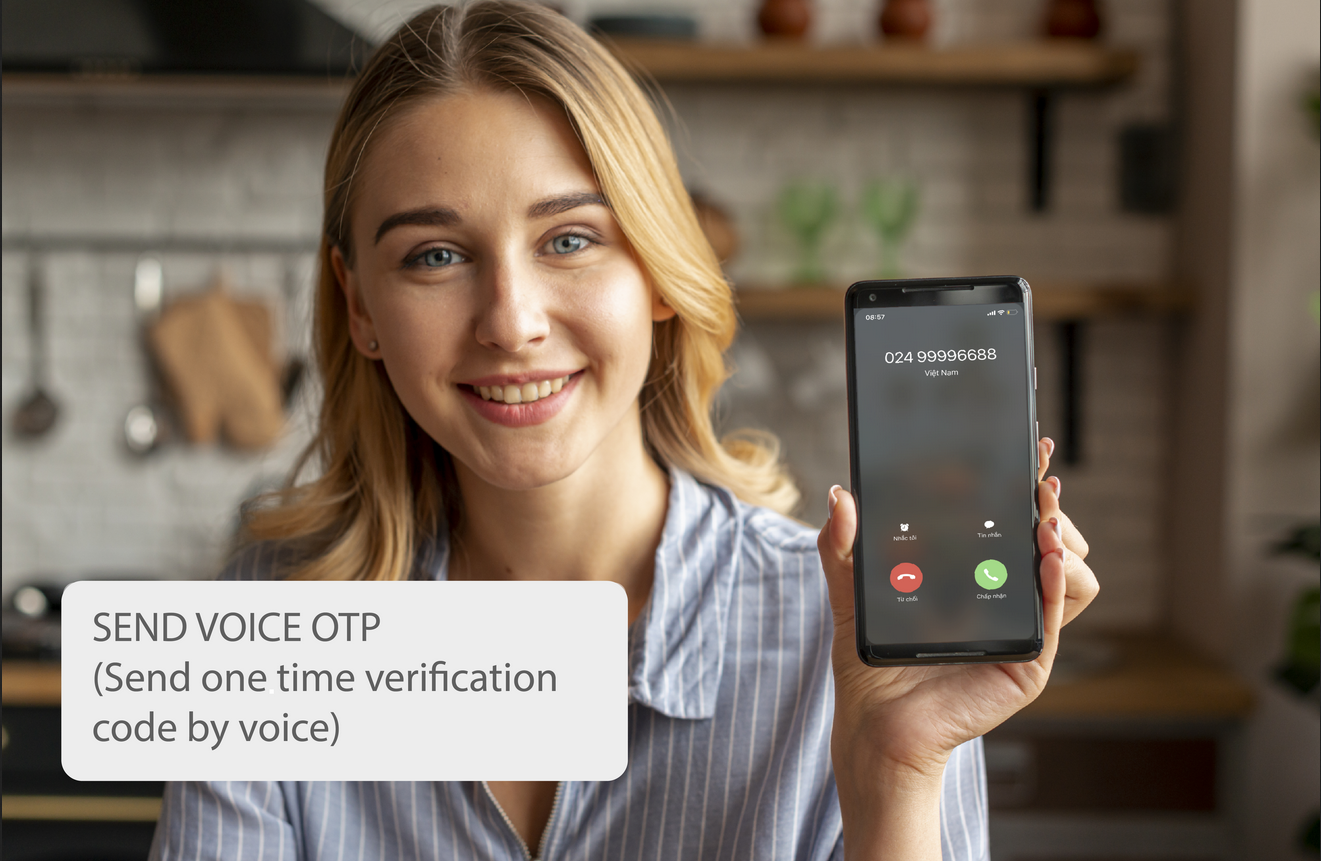Voice OTP (One-Time Password) service is a service that provides automated voice calls to deliver one-time passwords to users for the purpose of authentication and security. Voice OTPs are commonly used as a form of two-factor authentication (2FA) or multi-factor authentication (MFA) to enhance the security of online accounts and transactions.
How a Voice OTP service works:
User Initiation: When a user attempts to log in to a secure system or perform a sensitive action (e.g., verifying a transaction), they request a Voice OTP as an additional layer of security.
OTP Generation: The authentication system generates a unique one-time password (OTP) that is valid for a short period, often just a few minutes. This OTP is usually a numeric code.
Voice Call: The Voice OTP service initiates an automated voice call to the user’s registered phone number.
OTP Delivery: When the user answers the call, they hear a computer-generated voice that reads out the OTP. For example, “Your one-time password is 123456.”
User Input: The user listens to the OTP and manually enters it into the application or website they are trying to access. This step confirms their identity and completes the authentication process.
Authentication: The system verifies the entered OTP against the OTP generated earlier. If the OTP matches, the user is granted access or permission to proceed with the requested action.
Voice OTP services offer several benefits:
Enhanced Security: OTPs are time-sensitive and provide an additional layer of security beyond traditional passwords.
Phishing Resistance: It can be more challenging for attackers to intercept or manipulate voice OTPs compared to text-based OTPs.
Accessibility: Voice OTPs can be more accessible for users who have difficulty reading or receiving text messages.
There are some considerations with Voice OTP services:
Cost: Sending voice calls can be more expensive for organizations compared to sending text messages (SMS OTPs).
User Experience: Some users may find receiving a voice call less convenient than receiving a simple SMS message.
Dependency on Phone Network: Users must have access to a mobile or landline phone to receive voice OTPs.
Voice OTP services are commonly used in various industries, including banking, healthcare, e-commerce, and online services, where security and user authentication are top priorities. Organizations implement these services to protect user accounts and sensitive data from unauthorized access.




